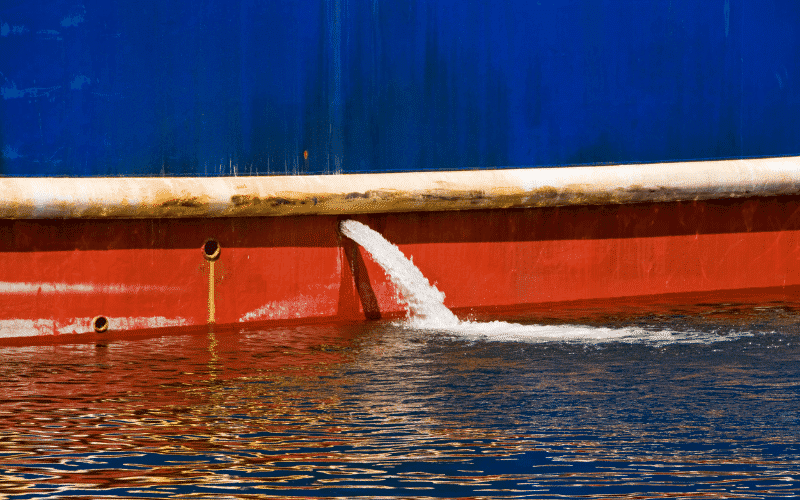

Ballast and de-ballast operations on the ship must be carried out by an experienced and responsible officer as it is directly related to the stability factor of the ship.
A ballast system may differ from ship to ship but the basics of all ballast systems remain the same; filling, removing, and transferring water from one tank to other to get the required stability for a ship.
All valves in the ballast system are normally hydraulically operated from the remote operator station in the ship’s control centre or in the ECR in manual mode or in automatic sequence.
The ballast pump suction and discharge valves, along with other valves, have their fail-safe in the OPEN position so that if any valve malfunction or get stuck, still remains open to carry out ballast operation.
The overboard discharge valves have their fail-safe as fail-stay position


Ballasting or De-ballasting can be done in five following ways:
Note: Double bottom tanks should always be filled by gravity.
Care should be taken to ensure that the tank is not overfilled; as this will damage the tanks because the pressure vacuum valves have a lower capacity than that of the pump. The filling valves will close automatically when the tanks reach their set point level, which has been pre-set.
[the_ad id=’172861′]
Also, care has to be taken not to run the pump dry or run the pump with discharge valves closed. This can be taken care of by an automated system, which ensures that the pump will not start until all the necessary valves are opened.
Valves can be put in auto mode, which ensures that the valve closes automatically once the ballast tank is filled with the required amount of water or once the setpoint is reached.
Port and starboard sides are considered two separate systems, each having its own automatic sequence for ballast /de-ballasting.
When filling ballast tanks with ballast pumps it should be observed that the motors are not overloaded (check current in ammeter). If this occurs, the number of opened valves to ballast tanks shall immediately be reduced (closed) until the current is within the allowable limit. A ballast pump motor overload alarm is given for the safety of the ballast pump.
Sometimes during a sea voyage, one can get an alarm on the ballast pumps suction pressure high. At that time just open the suction valve to the sea chest and close them when the pressure is reduced.
The water in the heeling tanks should always be half of their total capacity. But if required the heeling tanks can be used as ballast tanks. The ballast pump is used to empty or fill the heeling tank.
Also in some ports, the port authorities may ask for a sample of the ballast that the ship is carrying. In this case, the sample has to be taken from the sounding pipe connection. The locations of all the sounding pipes are provided on the ballast system plan of the ship.
You may also like to read-What is Ballast Water Management Plan?
Disclaimer: The authors’ views expressed in this article do not necessarily reflect the views of The Marine Learners. Data and charts, if used, in the article have been sourced from available information and have not been authenticated by any statutory authority. The author and The Marine Learners do not claim it to be accurate nor accept any responsibility for the same. The views constitute only the opinions and do not constitute any guidelines or recommendation on any course of action to be followed by the reader.
The article or images cannot be reproduced, copied, shared or used in any form without the permission of the author and The Marine Learners.










We believe that knowledge is power, and we’re committed to empowering our readers with the information and resources they need to succeed in the merchant navy industry.
Whether you’re looking for advice on career planning, news and analysis, or just want to connect with other aspiring merchant navy applicants, The Marine Learners is the place to be.